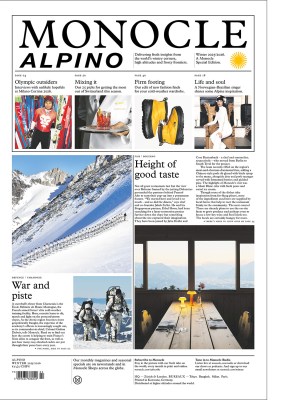Salone del Mobile
How Completedworks has made a name for itself using materials in unconventional ways
Anna Jewsbury’s London-based studio Completedworks offers up a world of colour, charm and inspired objects. These range from sculptural earrings to molten-looking glass jugs and puffy vases cinched with pearl necklaces. In her work, Jewsbury places a premium on the idea as opposed to the medium. Perhaps it’s that restless, searching energy that encouraged her to move the brand, which started with jewellery in 2013 before later taking on homeware and leather handbags, into the world of furniture, too.
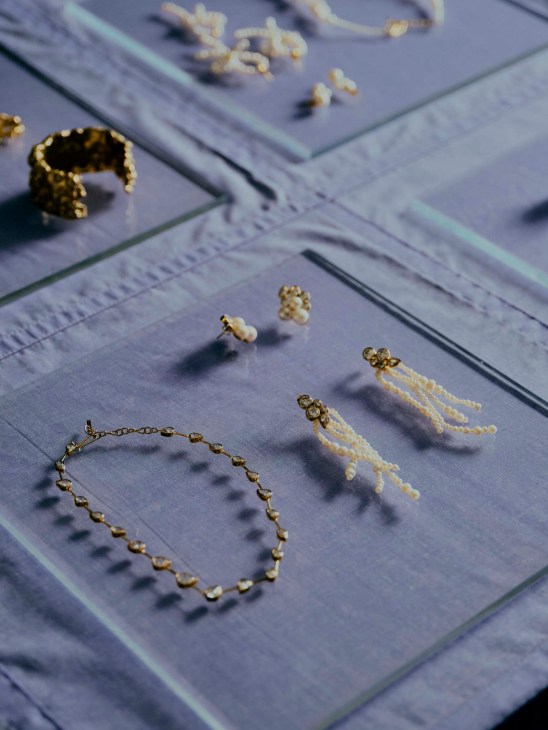

Jewsbury built her first piece of furniture when she was renovating her London home three years ago, using the scrap materials that had been left behind by her builders. Fashioning a tiered shelf out of polystyrene, she found that her design language translated well to a larger scale. “Jewellery is so small and intimate,” she says. “But it’s satisfying to work on something bigger.”
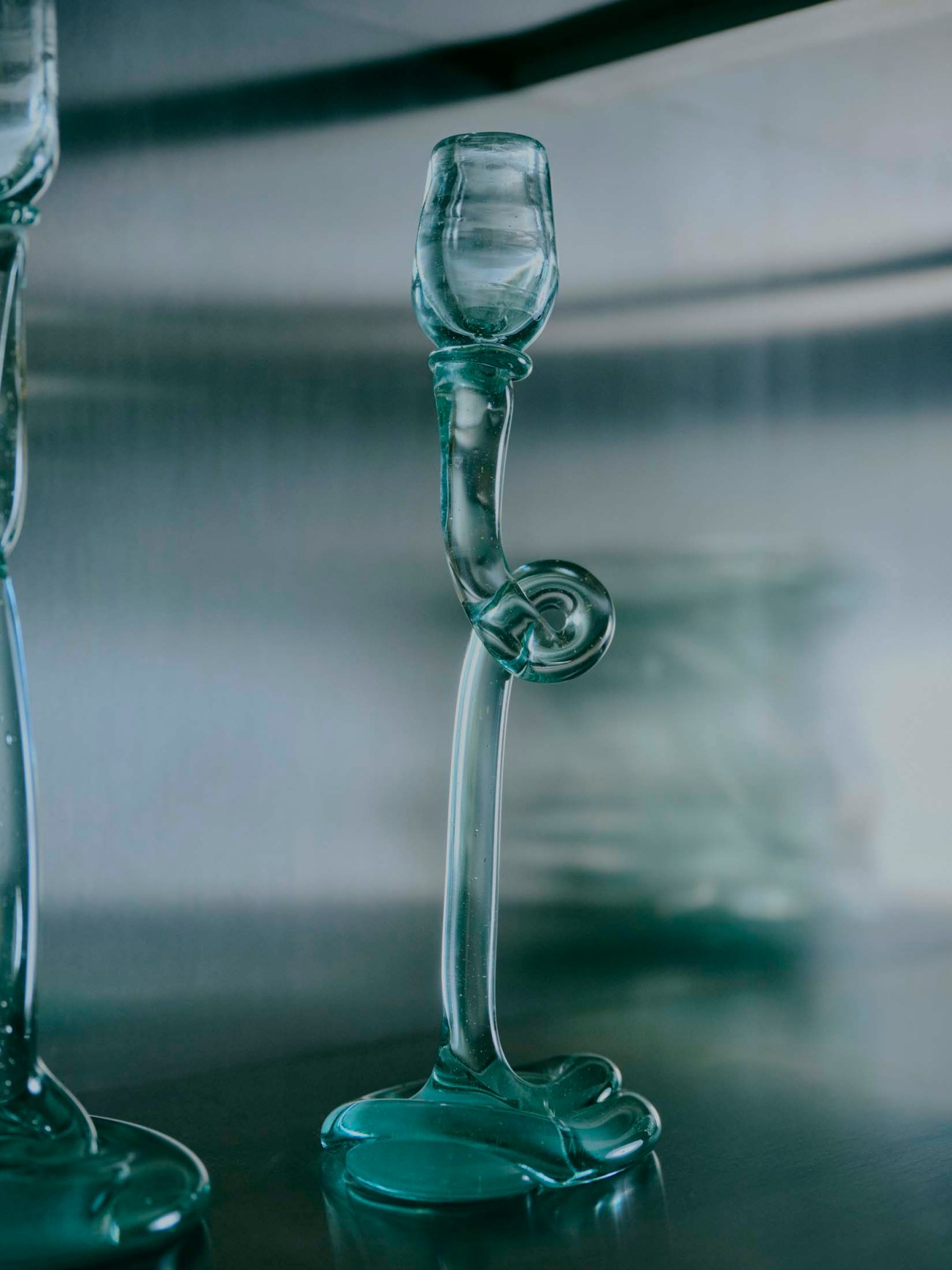
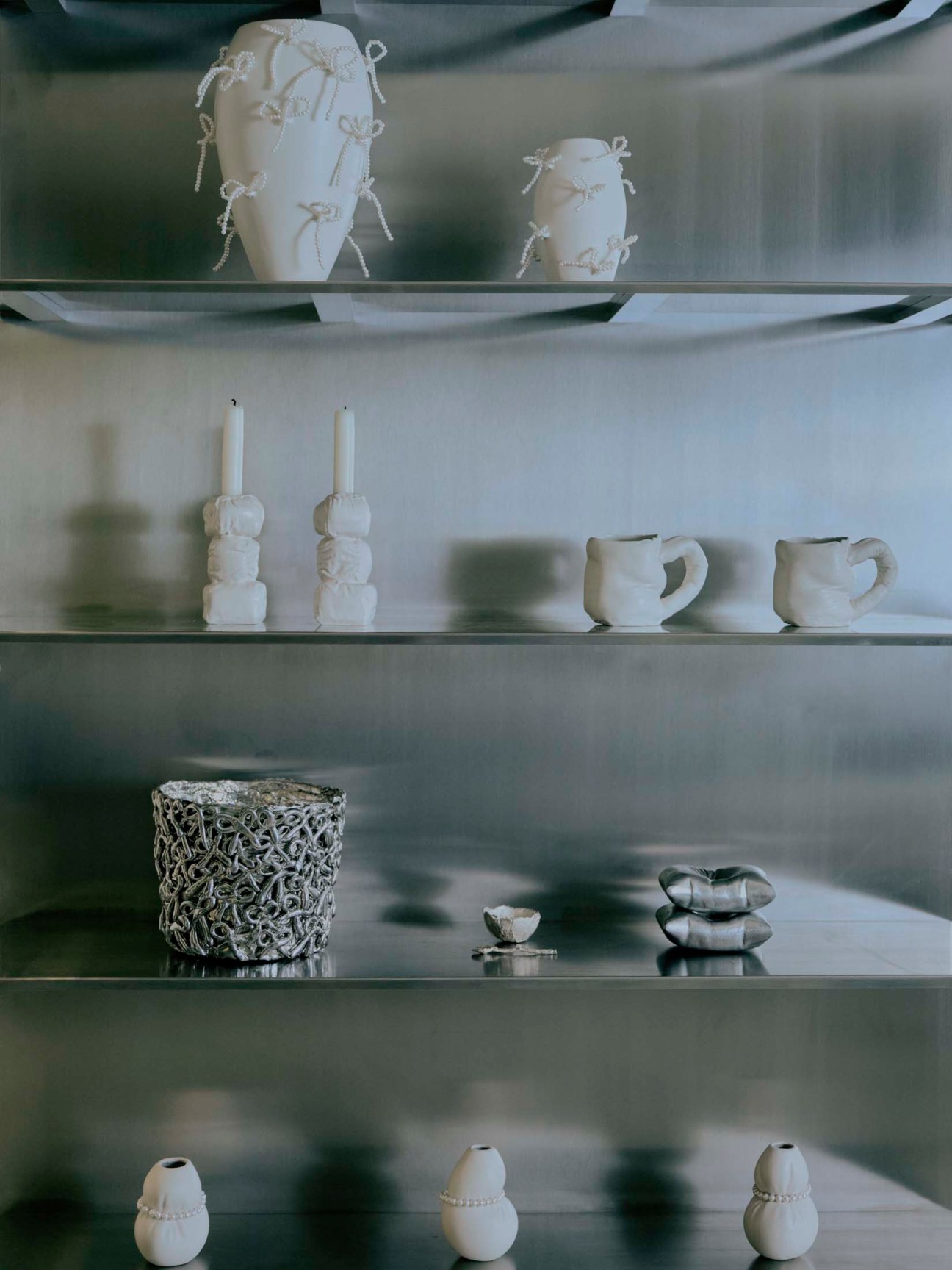
She is getting ready to present her first furniture collection at Alcova, the emerging designers’ showcase at Salone del Mobile. The five pieces will be on show in the grand Villa Borsani in Varedo, an hour’s drive from Milan. Like all Completedworks designs, each features fluid lines and a dose of humour. “There are elements here of things that we’ve done before, with materials imitating fabric and exploring folds and movement,” says Jewsbury, gesturing to the pieces on the ground floor of her London atelier. “It’s fun to see how my designs manifest in different ways, from an earring – which, in a way, is a tiny sculpture – to homeware, which becomes more functional. And now, furniture.”
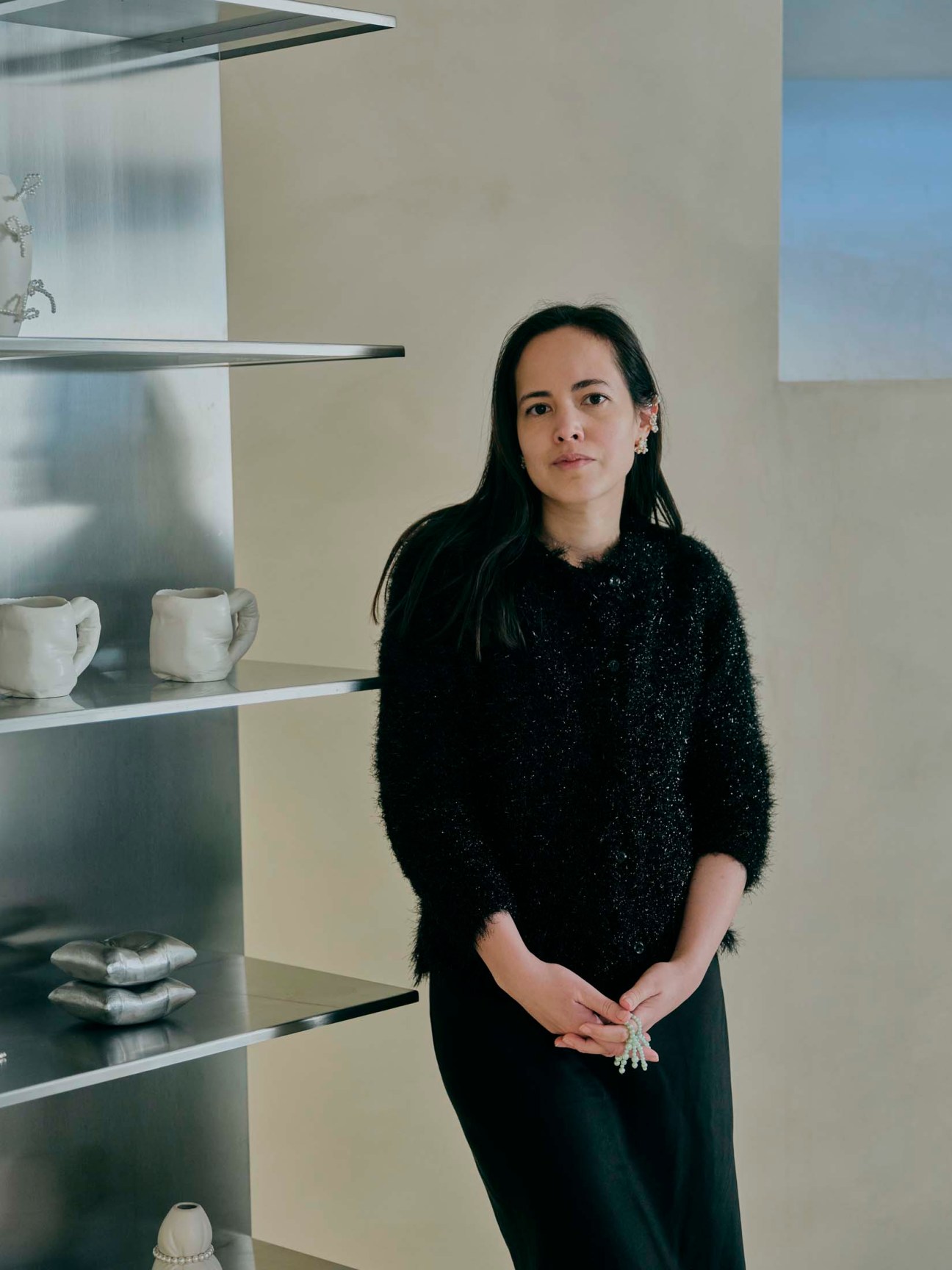
One piece in the collection, a patinated bronze chair, has a spine that’s made to look like tied rope. While it appears too delicate to sit on, a photograph on the studio wall shows a sturdy man “testing” it. The line also features a bench, a side table and a larger coffee table, which all, by contrast, look as though they’re made from heavy metal. Think again: bonded clay and silver nitrate coat lightweight polystyrene. “You don’t quite know whether it will be squishy or hard, light or strong,” says Jewsbury of her designs. She has only created prototypes so far, though she hopes for limited-run collections that will be sold alongside her jewellery and homeware. While moulds permit the bronze pieces to be replicated, the polystyrene-and-silver pieces will each have to be specially made.
At this stage, jewellery still makes up about 80 per cent of Completedworks’ sales. Time will tell how furniture will fit in. “Customers now like to buy across different categories,” says Jewsbury. “They want to come back and discover something new.” For her, experimenting is also just part of the fun. “I just want to create pieces that make you do a double take – the kind of designs that you don’t understand until you slow down and look more closely.”
completedworks.com
Five creative forces shaping the worlds of architecture and design
1.
The architect
Cristina Celestino
Milan
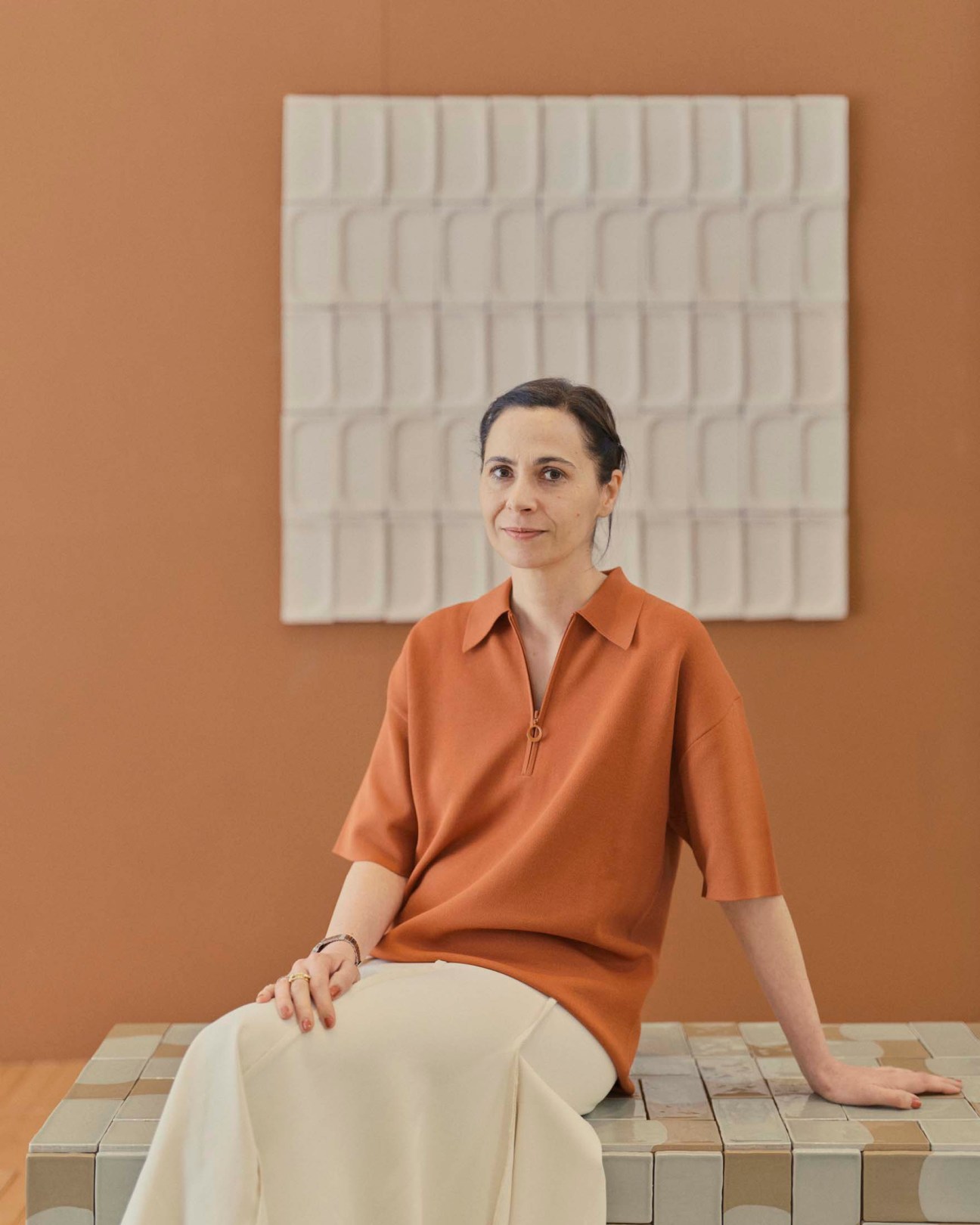
Cristina Celestino is the founder of her namesake design studio, established in 2013. Known for work that is playful and practical, often referencing geometry and rooted in material innovation, the Milan-based architect has collaborated with a host of household names. Partners have included fragrance brand Diptyque, luxury fashion powerhouse Fendi, and, in 2025, outdoor furniture specialists Ethimo. She tells us how her style shines when working with different brands.
How important is Milan to your work?
It’s the starting point of my work and where I discovered my passion for interiors and design. Everything shifted for me when I moved to Milan. If you’re creative, everything in the city is about design. You end up meeting a lot of people involved in design, such as stylists and photographers. There is also the Triennale di Milano; they all of them make it easy to focus on your passion.
You are launching a collaboration with lighting brand Moooi during Salone del Mobile. Tell us more…
The lighting references the Venetian glass chandelier. The archetypal shape links to the geometrical shape of Luca Pacioli, who was a mathematician during the Renaissance period. It’s made out of methacrylate, a material that seems like glass at first glance and reflects the light in a special way.
Is there a link that runs through all your projects?
We don’t force our design to fit the brand we work with. Instead, we research and try to understand how to match the brand without changing our identity. We aim to come up with a new piece that, in some way, differs from the others on the market, is commercial and offers some personality.
2.
The designer
Nifemi Marcus-Bello
Lagos

Lagos-based Nifemi Marcus-Bello is a creative force, shaping Nigeria’s design narrative with his distinctive geometric and colourful creations. His design office, Nmbello Studio, focuses on craftsmanship: “I decided to start making handmade pieces as much as possible,” he tells Monocle. The designer’s talent lies in his ability to synthesise diverse influences. It’s an approach that manifests in a range of object typologies, garnering him recognition from the likes of the Hublot Design Prize, the Loewe Foundation Craft Prize and the Monocle Design Awards in 2023.
In 2025, Milan Design Week is also high on his priority list. “Salone del Mobile is where like-minded people come together to discuss the future of design,” he says. As corny as that sounds, that’s what’s on everyone’s mind and they are all diving into that conversation.” We catch him prior to the event.
Why is design a powerful way of telling stories?
I always wanted to be an artist before becoming a designer. What I love about art is its narrative and the power of storytelling. In some cases, especially the way I was taught, storytelling is treated as an afterthought, or even as something that shouldn’t be part of the design process. But for me, design is a powerful medium precisely because objects are easier to digest. Everyone interacts with objects, but not everyone interacts with art.
What is the temperament of design for you right now?
It’s about understanding design from a cultural standpoint. We live in a global village, but people interact with their daily lives in completely different ways. I think it’s important to consider how we can design objects that enhance everyday experiences based on specific geographical spaces.
How would you like to see this idea reflected across the design community?
I’d like to see a stronger ethnographic approach to design, as it seems to be disappearing. Everything looks and feels the same, people are telling the same stories and trying to solve the same problems. But our problems are not the same. It’s about designing with that in mind.
3.
The gallerist
Nina Yashar
Milan
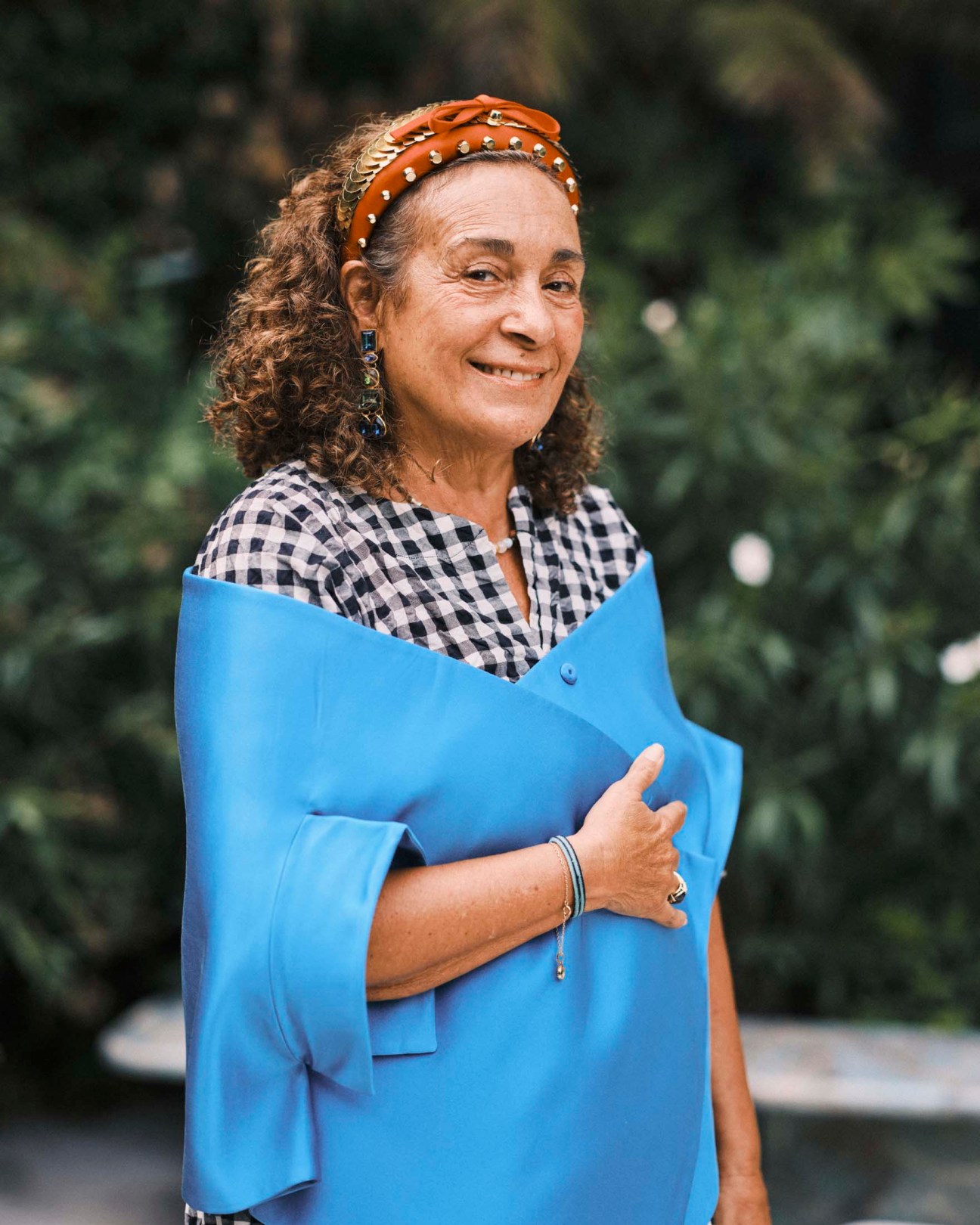
Nina Yashar, one of Milan’s most revered design curators, founded Nilufar Gallery in 1979, pioneering a rediscovery of 20th-century Italian design. Through her gallery space on Via della Spiga and warehouse-like Nilufar Depot, she champions both established masters and emerging talents, creating a dialogue between vintage and contemporary pieces. Her exhibitions, renowned for their theatrical staging, have redefined our approach to presenting design. Here, she discusses the 10th anniversary of the Depot and what she dubs her “new gold”.
What can you tell us about your upcoming exhibition at Milan Design Week?
Silver Lining is an exhibition based on metal. It was designed by Fosbury Architecture collective, a Milanese firm that is really aligned with the Nilufar philosophy: the relationship between heritage and contemporary. I have always been fascinated by the duality of metal; it’s something that balances strength and vulnerability. The raw material becomes different in the hands of the artisan. Over the past five or six years, the market has been dominated by brass and bronze. I wanted to define my new gold: silver.
Nilufar Depot is celebrating its 10th year in Milan. How does it continue to inspire you?
Looking back at all of the different exhibitions that I have worked on over the past 10 years, I realised that I treated Nilufar Depot as a platform for dialogue, experimentation, conversation and cross-generational exchange. At Milan Design Week, I will exhibit pieces by talented new creatives and people who I have worked with for many years. They are all inspired by 1970s styles. Take, for example, Italian architect Gio Ponti, French designer Audrey Large and Brussels and Antwerp-based studio Destroyers/Builders.
How do industry events such as Salone del Mobile contribute to Milan’s creative life?
For me, Salone is a platform where I can learn and discover, sometimes through
an object or a new designer. It’s a melting pot of different conversations, techniques and narratives. Over the past few years an increasing number of foreigners have moved to the city, which has given it another kind of power. Milan is now a cultural hub that connects the entire creative world, not only in design but also in fashion and art. Creativity is endless when all these different disciplines meet.
4.
The interior designer
Pierre-Yves Rochon
France
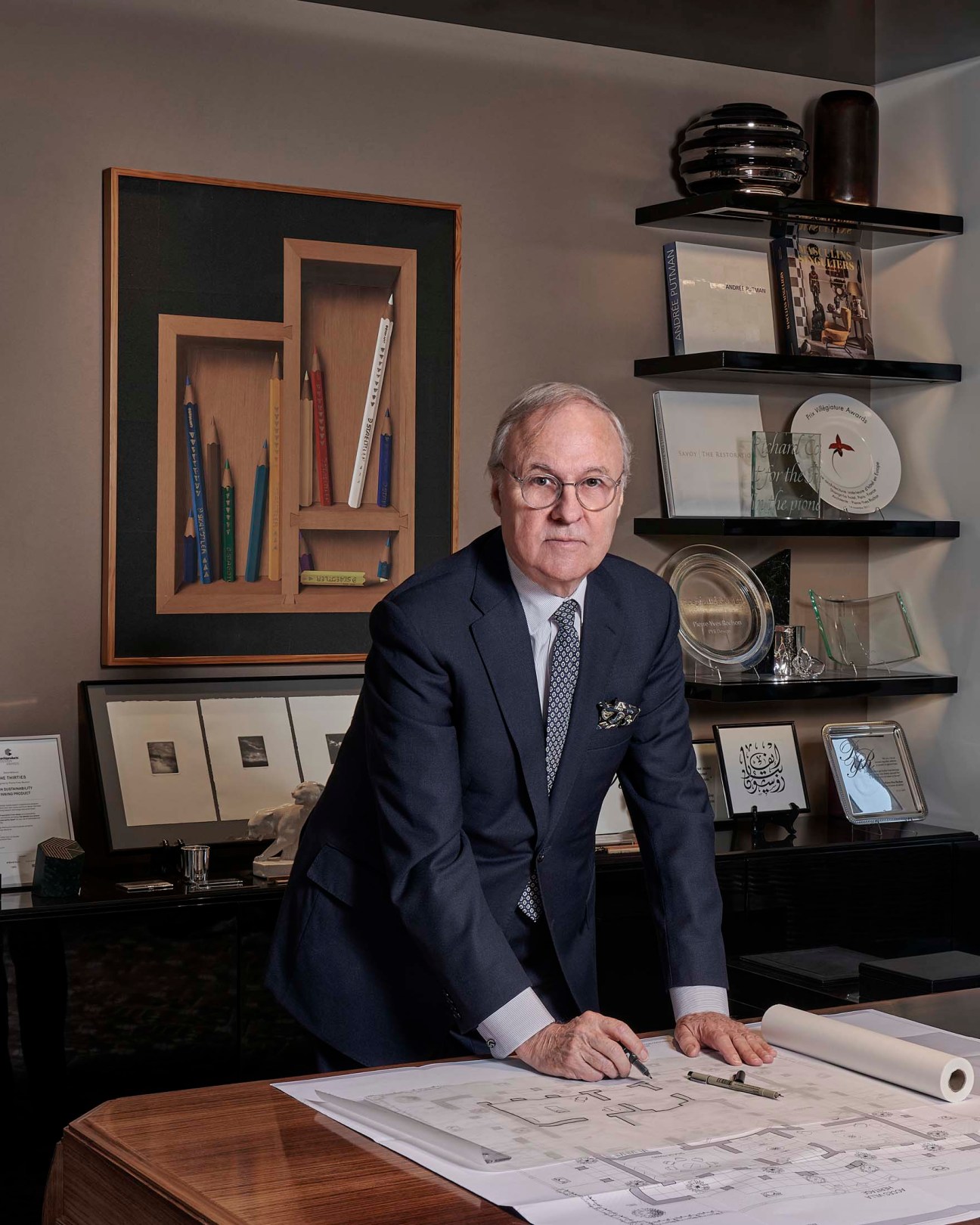
For more than 45 years, French interior designer and decorator Pierre-Yves Rochon has designed interiors for a variety of prestigious clients. These include hotels such as the Waldorf Astoria and the Ritz-Carlton, as well as the Michelin-starred restaurants of chefs Joël Robuchon and Alain Ducasse. Rochon is known for his work creating spaces that transcend trends, embodying a sense of timeless elegance and cultural depth. For this year’s edition of Salone del Mobile, he created Villa Héritage, an installation celebrating his vast experience in luxury interior design.
How do you approach heritage in your designs?
I try not to be influenced by fads because I see them as a moment when the majority of people are thinking the same thing. Heritage is different. It’s not nostalgia – it allows you to pick and choose influences that speak to your sensitivity.
Can you tell us about your installation, ‘Villa Héritage’, inside Salone del Mobile?
At Salone, visitors don’t necessarily visit the so-called “classical-style” halls as much as those dedicated to contemporary pieces, which is a shame. The idea is to show how different periods of Italian architecture and interior design, as represented by Salone’s exhibitors, can coexist. In creating Villa Héritage, we chose the most beautiful pieces, be it lighting or furnishings, and combined them with music and scents to create a more immersive experience. The goal was to design a space where light, texture and sound came together to elicit an emotional response from the viewer.
What do you hope that visitors will take away from ‘Villa Héritage’?
I hope that they will reflect on the idea of transmission, of how the past informs the present and allows us to imagine the future.
5.
The CEO
Giovanni Anzani
Brianza

Poliform, under the stewardship of Giovanni Anzani and his cousins Alberto and Aldo Spinelli – the company’s second generation – is a brand renowned for its comprehensive range of custom-made systems and luxury furnishings. Established in 1942, the Brianza-based brand has retained a dedication to high-end craftsmanship while also exporting Italian quality to the world. Anzani tells us his ambitions for 2025.
What are Poliform’s priorities for 2025?
From an economic perspective, our presence in international markets continues to grow. In 2023, for instance, we recorded a 9 per cent increase in sales turnover, reaching a figure of approximately €256m. This success is the result of our constant dedication to innovation and quality, and we are determined to continue on this growth trajectory in the future. China is gradually recovering, Germany and France will find a new balance, and there is a wealth of products heading to the United States.
How does Poliform balance its past and present?
Our most valuable assets are its cultural heritage and technological know-how. With unlimited creativity and expertise inherited from the tradition of Brianza, the best furniture district in the world, combined with cutting-edge know-how, Poliform can meet the needs of an international audience while maintaining a typically artisanal approach.
How will Poliform look to grow in the future?
We’ll continue to focus on a design concept of “Poliform Home” in which each component [of our collection] is stylistically coherent. It’s a “global project” in which the versatility of our modular systems can be fashioned to suit any architectural situation.
How Flexform has funded the renovation of a cloister in a former convent
Milan’s Via della Moscova is home to many elegant retailers, including Italian luxury furniture brand Flexform. But walk further down the road and you will come across the Santa Maria degli Angeli church, a hidden jewel in the heart of town – and it’s here, in a place not typically open to the public, that the brand will also be present during Milan Design Week.
The site, first built in the 1500s as a Franciscan convent, has experienced multiple transformations over the years, including being a military courthouse in the 19th century. After the main building was almost completely demolished during the First World War, the complex was redesigned by Milanese architect Giovanni Muzio in 1939. Part of the novecento artistic movement, Muzio was inspired by simple lines, which were in harmony with the changing landscape of the city in the middle of the 20th century. As a result of this outlook, the architect created a single courtyard framed by two old cloisters (which survived bombings). Today greenery grows freely over the columns. It’s this unique architectural story that attracted Flexform to the location. “It is precisely in this balance between simplicity and the sophisticated construction of space that Flexform finds its own reflection,” explains Saul Galimberti, director of the Flexform Design Center, as he walks Monocle along the brick-clad galleries of the cloister. “As in the architecture of Muzio, in Flexform furniture there is nothing in excess, nothing that does not serve a specific purpose. Every line, every material is designed for long-lasting durability, to move through trends and fashions without being subjected to them.”
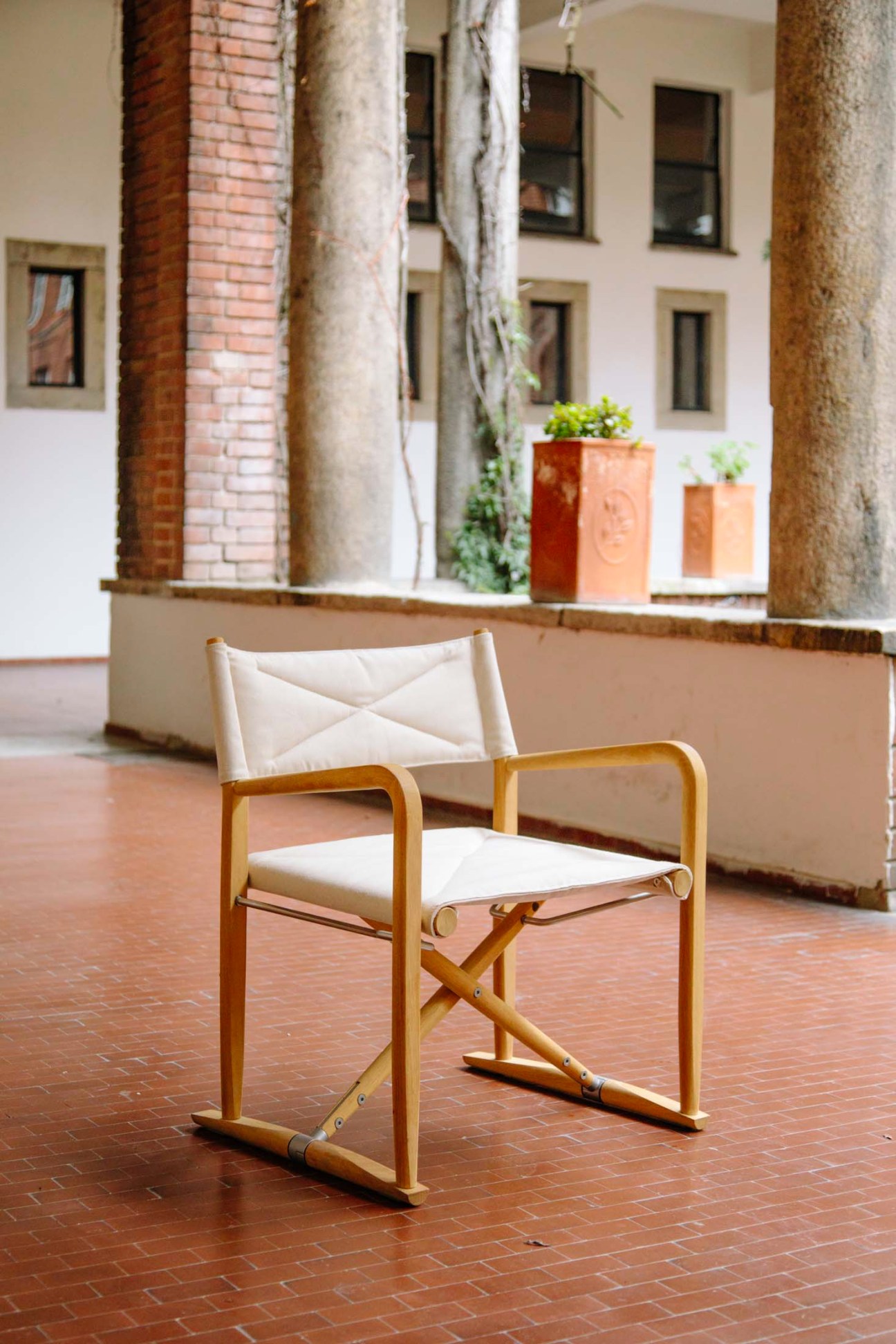
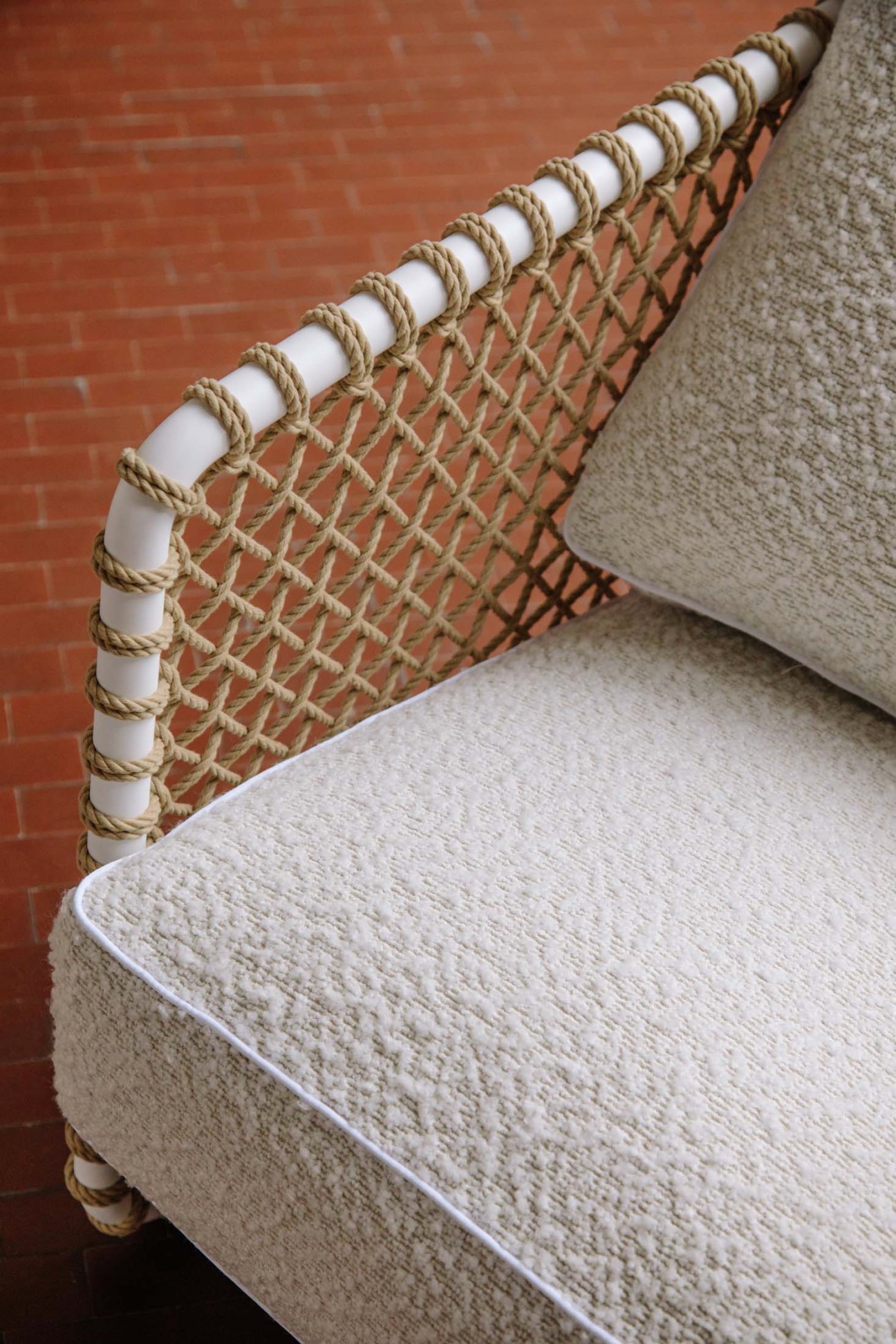
Muzio’s style also speaks closely to the design philosophy of architect Antonio Citterio, who drew Flexform’s latest outdoor collection. This includes two outdoor armchairs and a daybed for the Oasis collection, made with woven cord-and-metal combinations and mesh-like patterns. “Antonio Citterio knows how to make the most of our know-how and pushes us towards making the most of the high level of craftsmanship we are capable of, whether it is for indoor or outdoor products,” adds Galimberti. “All of the new outdoor designs show this marriage between tradition and innovation.”
Citterio has had several of his pieces photographed in spaces designed by Muzio in the past, including Flexform’s Max sofa in the Palazzo dell’Arte, making this collaboration a seemingly perfect match. But the poor current conditions of the cloisters (it seems it’s always in the wars) meant that it was a challenging proposition for Flexform to use it as a setting to welcome guests during Milan Design Week. And so the firm took on the challenge of funding the renovations of the Santa Maria degli Angeli cloister, which will soon allow visitors.
For Galimberti, this was part of the brand’s social responsibility and a way to give back to a city that inspires them. “We aim to leave the cloister in better condition compared to our first visit,” he says. “We feel a responsibility as entrepreneurs to take practical steps to contribute to the welfare of the city.”
Piazza Sant’ Angelo, 2; flexform.it
Interview: Giulia Molteni, Molteni&C
Molteni&C is internationally recognised for its outstanding designs. But despite the Brianza-based company’s global reach, Lombardy is still home. And it’s here, in Milan on Via Manzoni, that it has opened its most impressive offering yet: Palazzo Molteni. Set in a former 19th-century family residence, this seven-floor flagship was renovated under the direction of the brand’s creative director, Vincent van Duysen. Here, Giulia Molteni, head of marketing and communication, tells Monocle all about the brand’s newest outpost.

What was your ambition with Palazzo Molteni?
Palazzo Molteni isn’t simply a place to showcase furniture – it’s a home, a cultural destination and a Milanese residence. The idea was to create the house of a collector, where design, art and architecture all come together. Walking in, you step into an elegant private residence, where every piece has been chosen with intention.

How is this vision reflected?
Each floor is designed as a distinct apartment, showing how our collections adapt to different styles of living. The ground floor is more formal, while upper levels are softer and more intimate. Vincent played with natural materials and layered textures, using light to define the atmosphere in a way that evolves throughout the day.
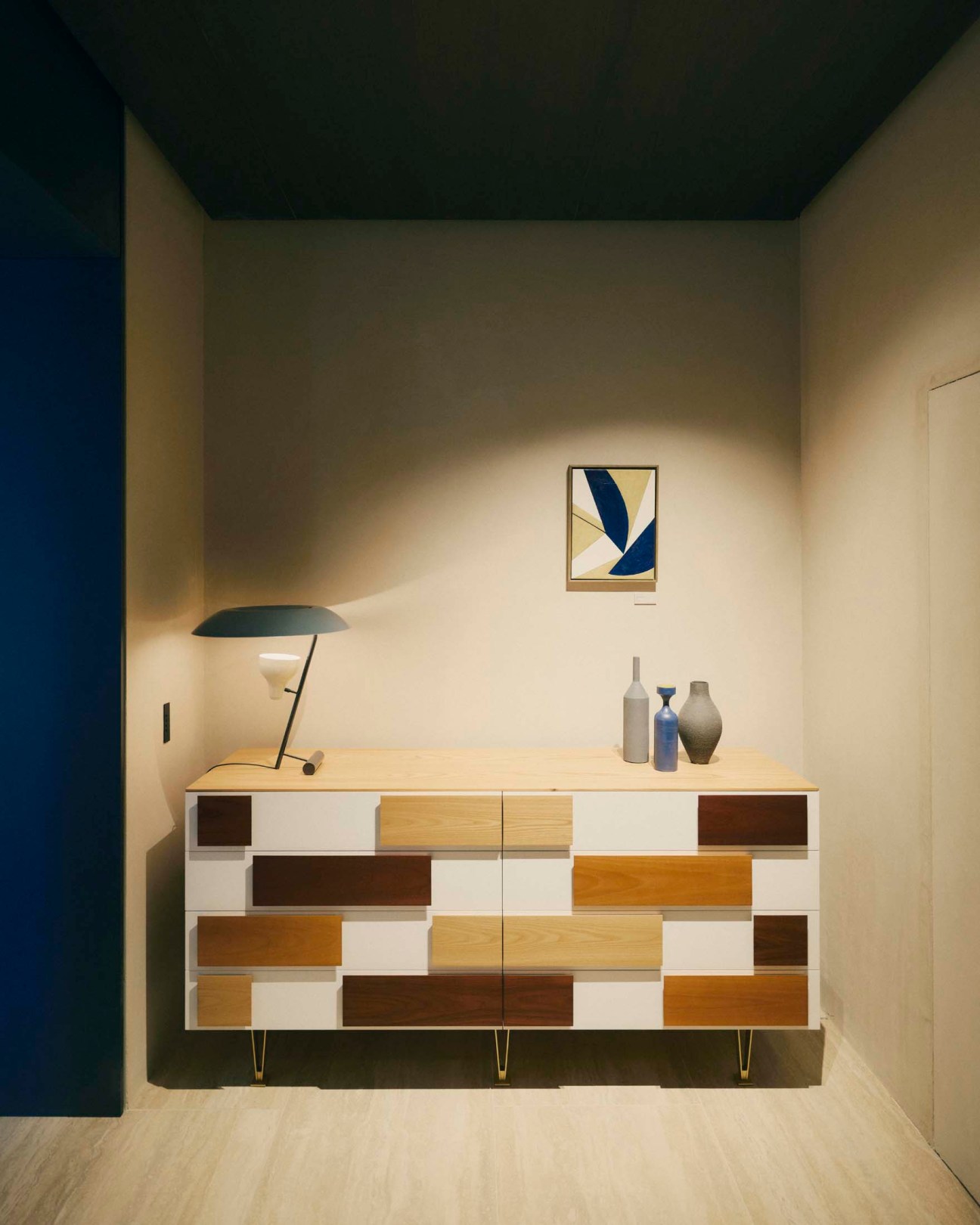

Why was celebrating culture and design important?
Design is never isolated – it sits at the intersection of architecture, art and craftsmanship. Palazzo Molteni reflects that by fostering connections between them. We partnered with Galleria Massimo De Carlo, one of Italy’s leading contemporary art galleries, to curate works that engage with the space. And we launched a new Gio Ponti collection, celebrating his legacy and close relationship with Molteni&C. The Palazzo also houses a library of architecture, design and Milanese history – as a home isn’t just about furniture, it’s about ideas.
9 Via Manzoni, Milan
molteni.it
Profile: Fabian and Liza Laserow Berglund, Nordic Knots
When it comes to furnishing our spaces, buying a rug can be low on the list of exciting purchases when compared to armchairs, tables or even smaller items such as candle holders. The process of selecting a rug can feel somewhat flat. This is the reality that Stockholm-based couple Liza Laserow Berglund and Fabian Berglund faced when looking for options for their own home – leading them to co-found, along with Fabian’s brother Felix, rug and textile company Nordic Knots in 2016.
“It was when we were buying a rug for our own apartment that we realised how difficult it is to navigate [the market],” says Fabian, who is Nordic Knot’s ceo and brand director, while Liza heads up the creative side. “There was a lot to choose from but not many appealing brands that you felt you could trust or know what they stand for. We felt a gap in the market.”
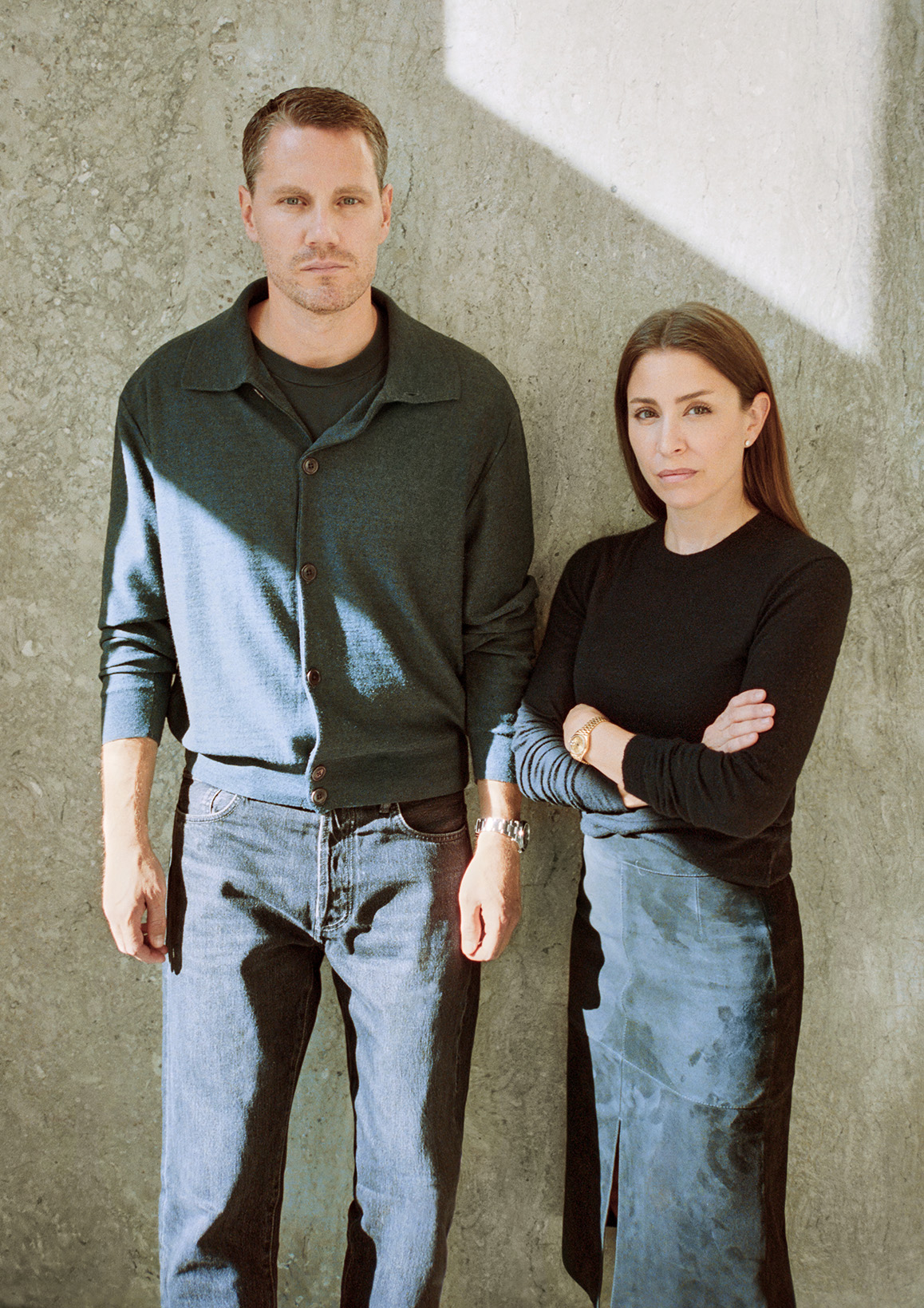
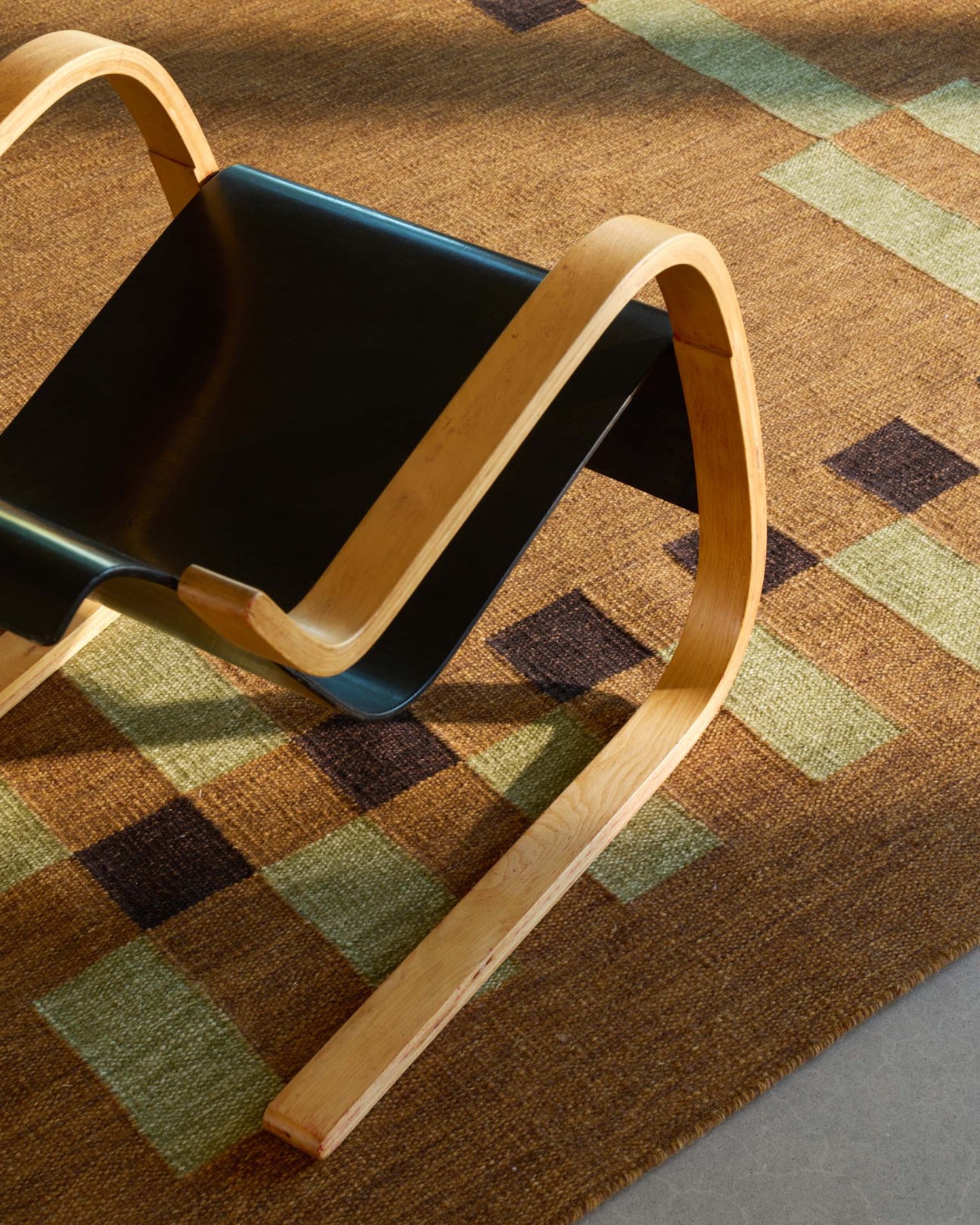
At the time, the couple were living and working in New York – Liza in the field of interiors and Swedish antiques and Fabian in advertising. This combined background is a powerful combination: Nordic Knots’ campaigns are often shot in people’s homes and given context with the help of clever staging. A plush wool walnut rug might be paired with a Le Bambole sofa by Mario Bellini. The graphic pattern of a flatweave carpet will sit in dialogue with modernist armchairs by Alvar Aalto. “We like to convey an atmosphere,” says Liza. “It’s about creating our perfect world. How do we envision our dream home in New York, Paris or by the coast? That’s the fun part.”
Today, Nordic Knots has something for everyone: wool, jute, shaggy styles, practical flatweaves, graphic patterns, solid colour, neutral, bold tones and collaborations with designers such as Giancarlo Valle, as well as a recent foray into the world of curtains. All of the company’s rugs are produced in India and the other textiles are made between Milan and Lake Como. This spring, Nordic Knots is adding new colourways to their bestselling Grand collection of wool (a standout is the pale-yellow Butter) and expanding their offerings of sheer curtains.
When coming up with new collections, Liza and Fabian often find inspiration in their travels to cities such as Milan or Paris and design movements including Swedish Grace or Bauhaus. “There’s also a great heritage of weaving and textiles in Sweden because of the cold,” says Liza. “People would even hang rugs on the walls to insulate. So we don’t want to take away the functionality but we do want to add beauty – and it’s important to never compromise on quality. We want our customers to live with the product, so it should be able to take wear and tear.” Fabian agrees. “Everyone needs a rug.”
nordicknots.com
Danish brand Georg Jensen is reimagining classic items with a material twist
Sometimes all you need to elevate an old staple is a new material. For its celebratory Danish-style ice-cream shop, opening as part of the Capsule Plaza showcase, Georg Jensen has reimagined items such as the traditional paper cup in sterling silver with accompanying glassware.
The Milanese are famous for indulging in the art of respite. Even during Salone del Mobile, one of the city’s busiest weeks, postprandial passeggiate or gelato breaks are commonplace.
In this spirit, heritage design house Georg Jensen is opening a gelateria danese (Danish ice-cream shop) as part of this year’s Capsule Plaza showcase at the Spazio Maiocchi gallery in Porta Venezia. To bring a Danish touch to proceedings, the brand has enlisted Chiara Barla from popular Copenhagen bakery Apotek 57 to devise the gelato flavours and the team behind Prolog Coffee (a favourite spot in the Danish capital’s Meatpacking District) to provide the beans, which will be served in Georg Jensen’s new line of silver coffee cups and glasses.
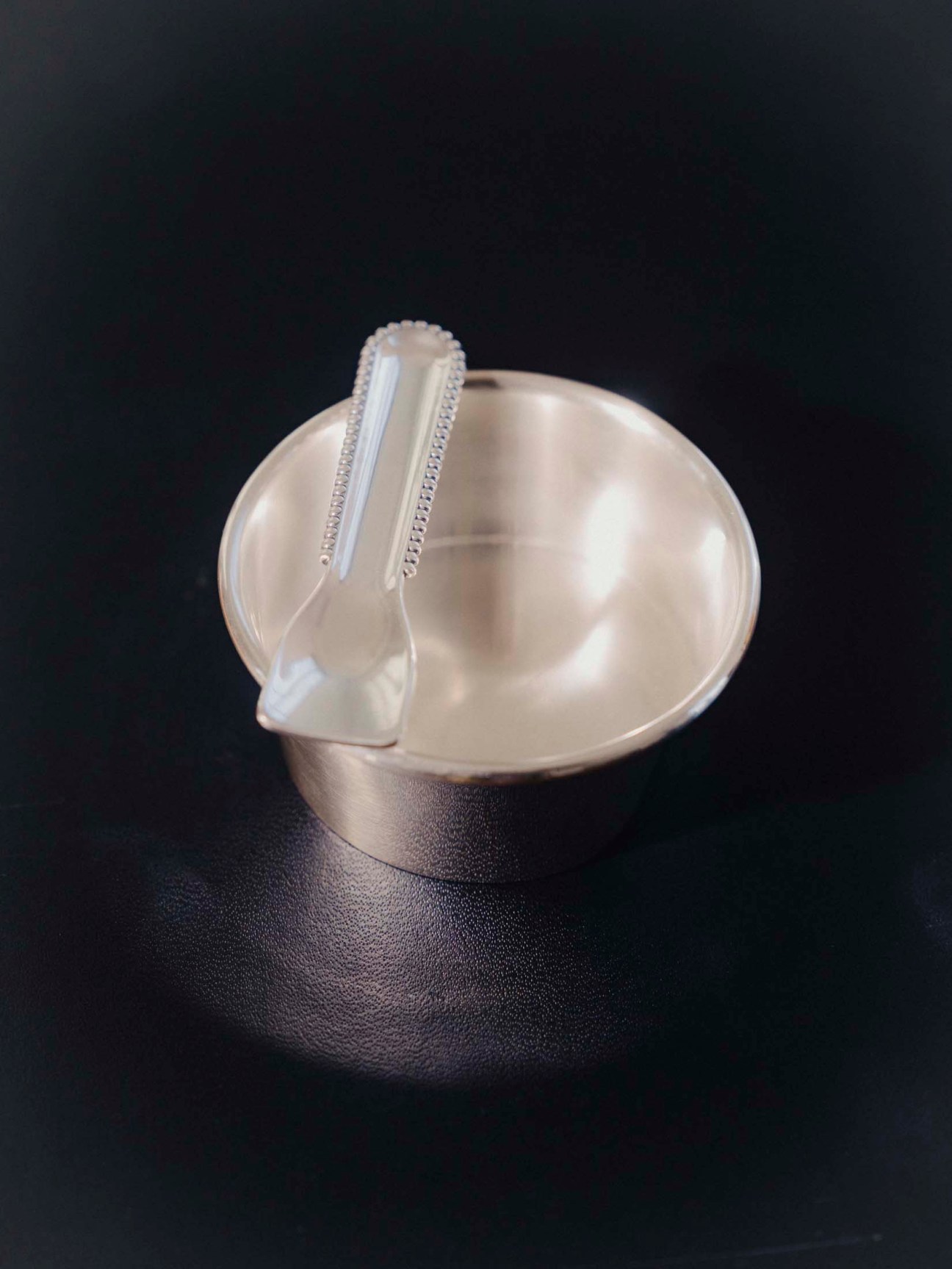
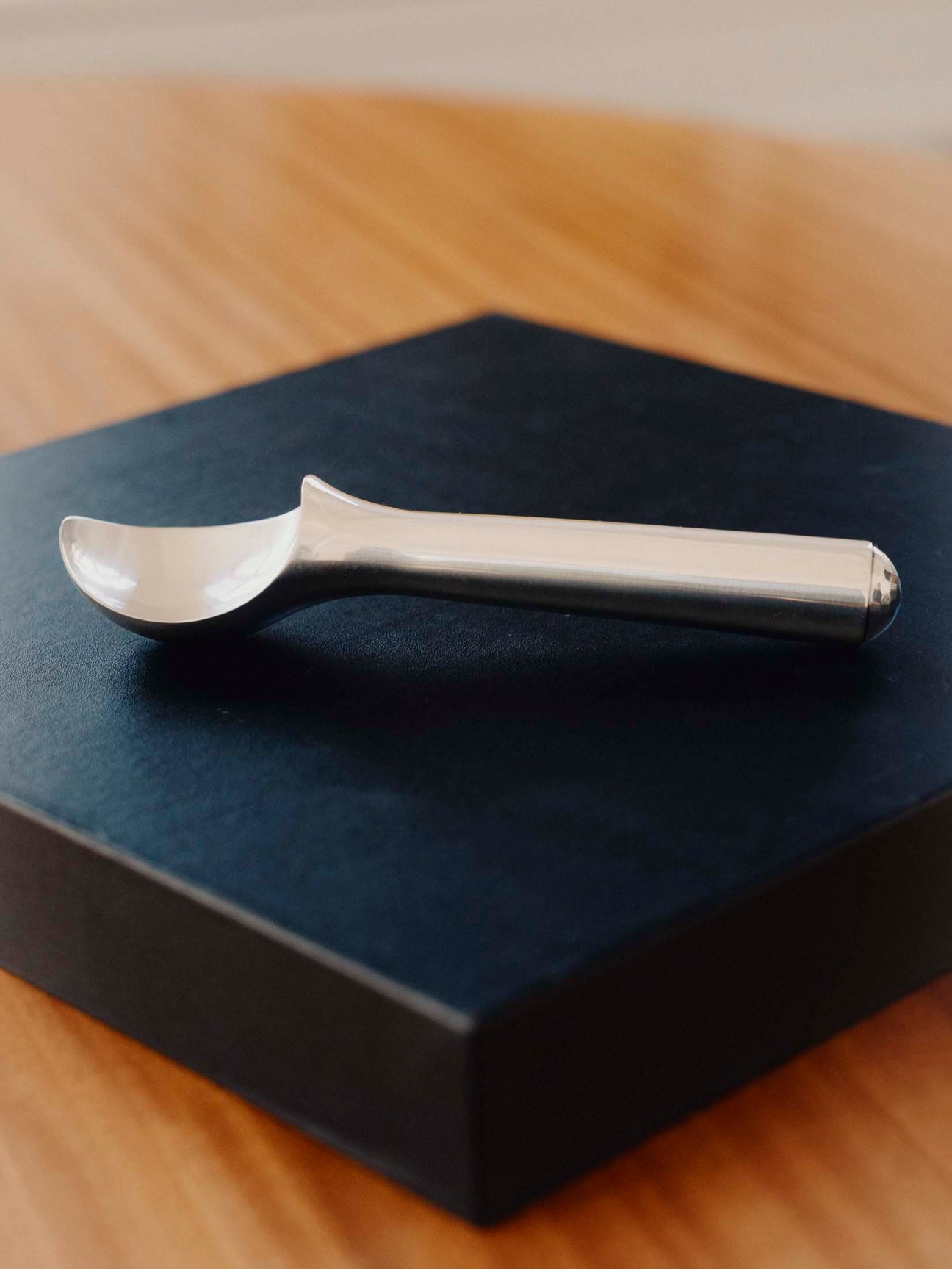
“It’s interesting to put silver into practice rather than keeping it on shelves, to be handled with white gloves on special occasions,” Paula Gerbase, Georg Jensen’s Brazilian-born creative director, tells Monocle. “We want to bring a little bit of lightness to a material that can sometimes be perceived as untouchable.”
The ice-cream kiosk will be the launch pad for Gerbase’s first collection for the house. Since joining last year, she has focused on the reissuing of archival pieces and for her debut, she opted for light-hearted, witty designs: cups, glasses for affogatos, stirrers and more unexpected items, including an ashtray and a popsicle stick, have all been rendered in fine silver by Georg Jensen’s in-house silversmiths.
“It’s a comment on the ability of objects to elevate any mundane moment,” says Gerbase. By upgrading the choice of material, the familiar idea of the disposable paper ice-cream cup is flipped on its head and turned into something to be cherished, to be reused again and again.
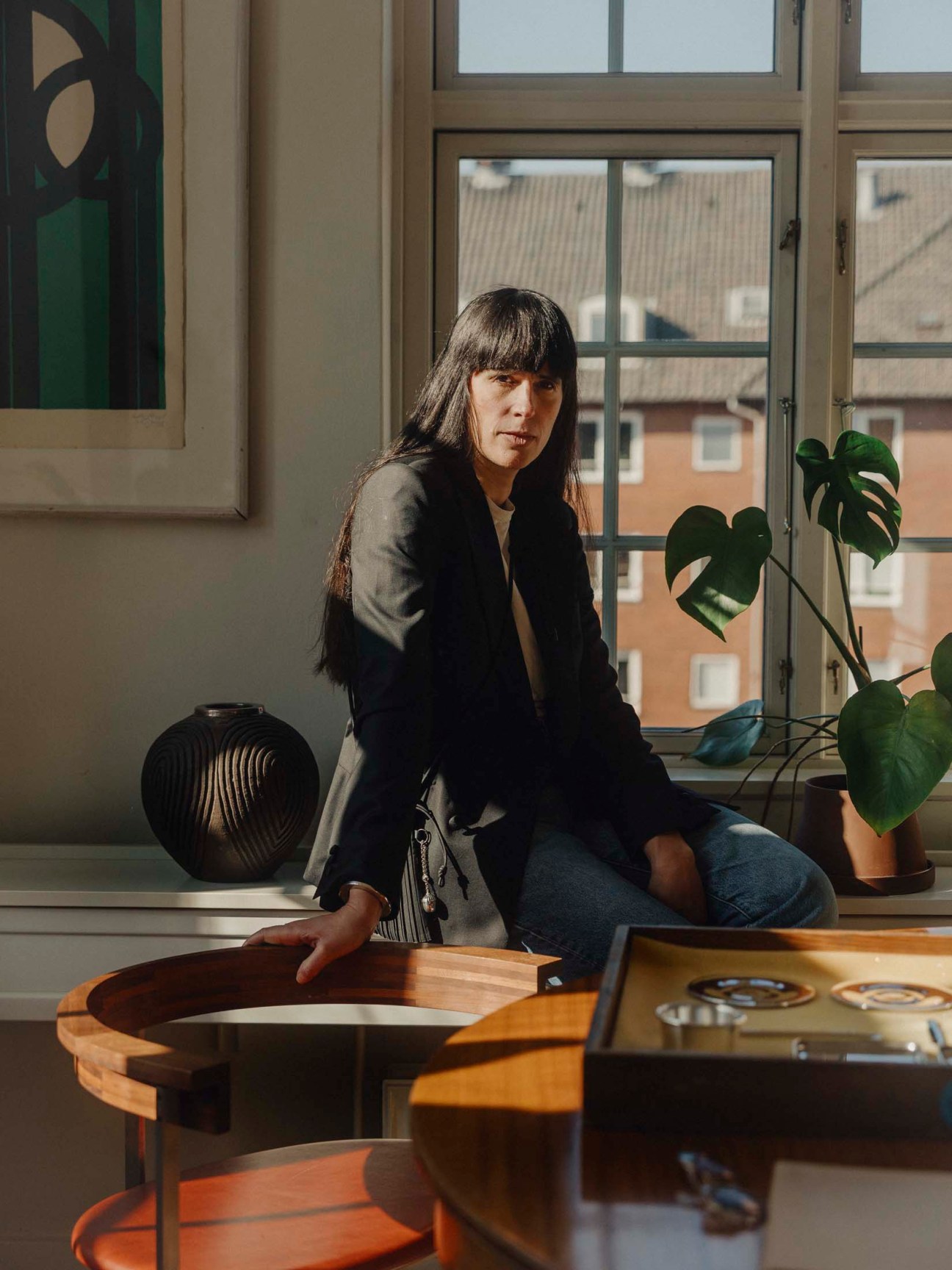
For the occasion, a longstanding Georg Jensen tradition of crafting an annual sterling-silver spoon was revived, with Gerbase putting forward a competition to design a coffee spoon. Two designs came out on top: one by a master who has been with Georg Jensen for 12 years and another by an apprentice who only joined the company a couple of months ago. “We wanted to open up the design process to those who know the material best,” says Gerbase.
Prior to her appointment as creative director of Georg Jensen, Gerbase trained as a tailor on London’s Savile Row and went on to become artistic director at the British luxury shoe brand John Lobb. As a transplant from the fashion industry, she brings a fresh pair of eyes to a Danish house that boasts more than 120 years of history. “It felt like a natural transition. I’ve always been compelled by the tension between modernity and heritage,” she says. “[I like to] redefine the values of a house by finding elements of history that are actually rooted in moving forward and modernity.”
Gerbase is not the only fashion insider making the move to design. Janni Vepsäläinen is now at the creative helm of Finnish company Iittala after working in-house at JW Anderson; while former Balmain executives Emmanuel Diemoz and Antoine Bejui are the new owners of French steel-furniture manufacturer Tolix. “What I’m taking with me from the fashion industry is a general curiosity, being inspired by different aspects and an ability to reinvent yourself,” says Gerbase. “It’s about being more fluid, never resting on your laurels. The ultimate compliment for me is seeing pieces that I’ve created in use – and with objects for the home, you have even more ability to be in people’s intimate spaces.”
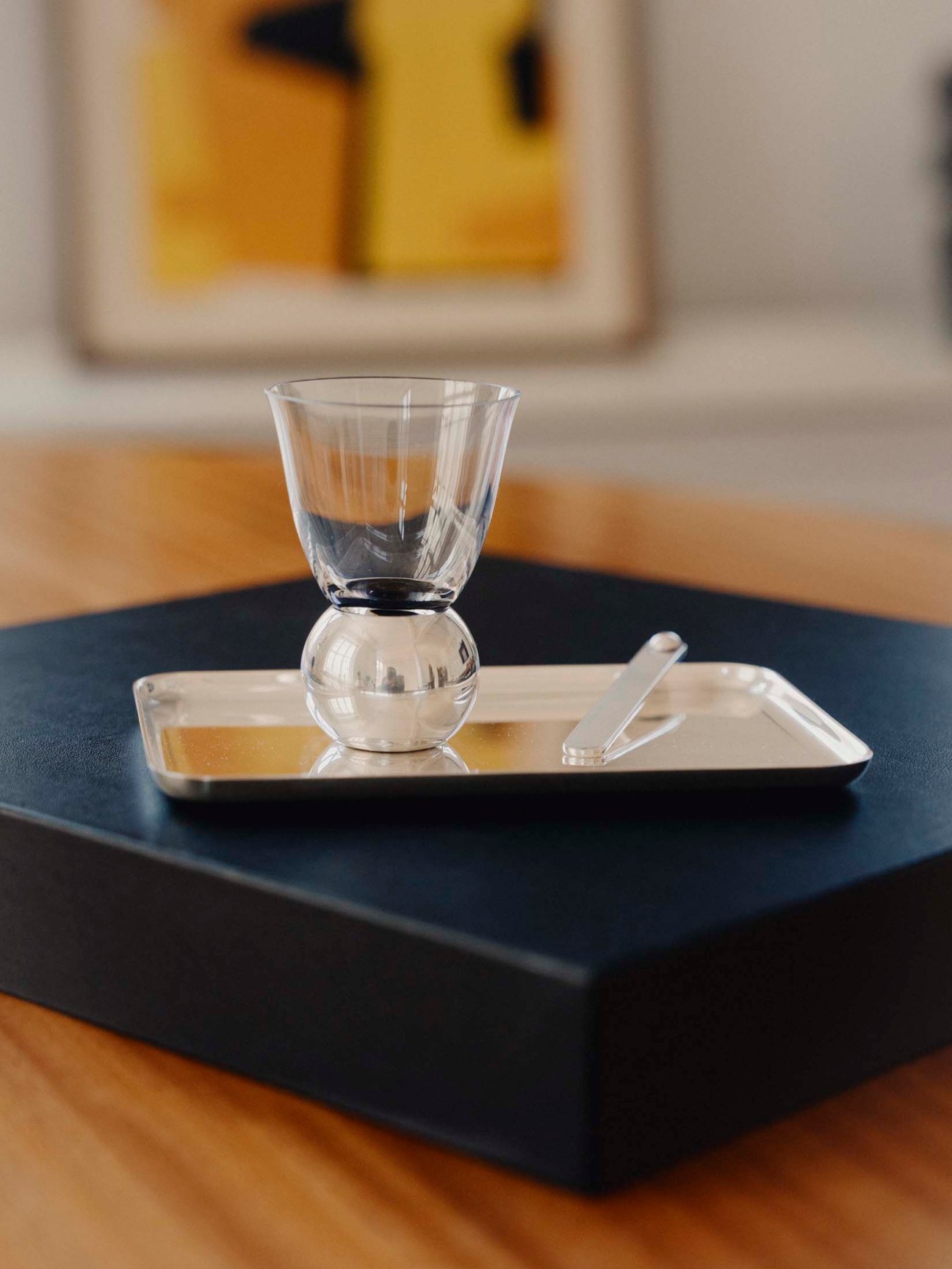
As a non-Dane, Gerbase is also well placed to extol the virtues of Georg Jensen to an international audience that might not be familiar with the brand. In Denmark, the house is well-known and regarded as an institution. “If you speak to Danes, [Georg Jensen] is part of their culture,” she says. “Everyone has multiple items [from the brand] that are part of their celebrations and their day-to-day.” For a Danish creative director, this historical baggage might weigh down their ability to challenge the status quo. As an outsider, Gerbase is able to approach the house from a fresh perspective. Case in point, this gelateria danese that marks a new chapter for the storied brand, under a creative director who is, with an appropriate balance of respect and irreverence, doing away with the rulebook and bringing some levity to the house.
We predict that this ice-cream kiosk will become a hot spot at which to cool off this Milan Design Week. “I would love for people to come and spend a moment with us,” says Gerbase. “I want to provide respite. To frame a solitary moment or coffee with a friend.” See you there, for a mid-afternoon affogato.
georgjensen.com
Interview: Draga & Aurel on using resin to create multiple dimensions
Draga & Aurel, founded in Como in 2007, is a true multidisciplinary studio, working across design and art, with one field informing the other. This is thanks to the creative pedigree of the work-and-life partners behind the practice: Draga Obradovic, a former textile designer, and Aurel Basedow, an artist. We catch up with the duo at their studio to hear about their process ahead of Milan Design Week, where they will showcase new work, heavily rooted in the use of materials such as resin.
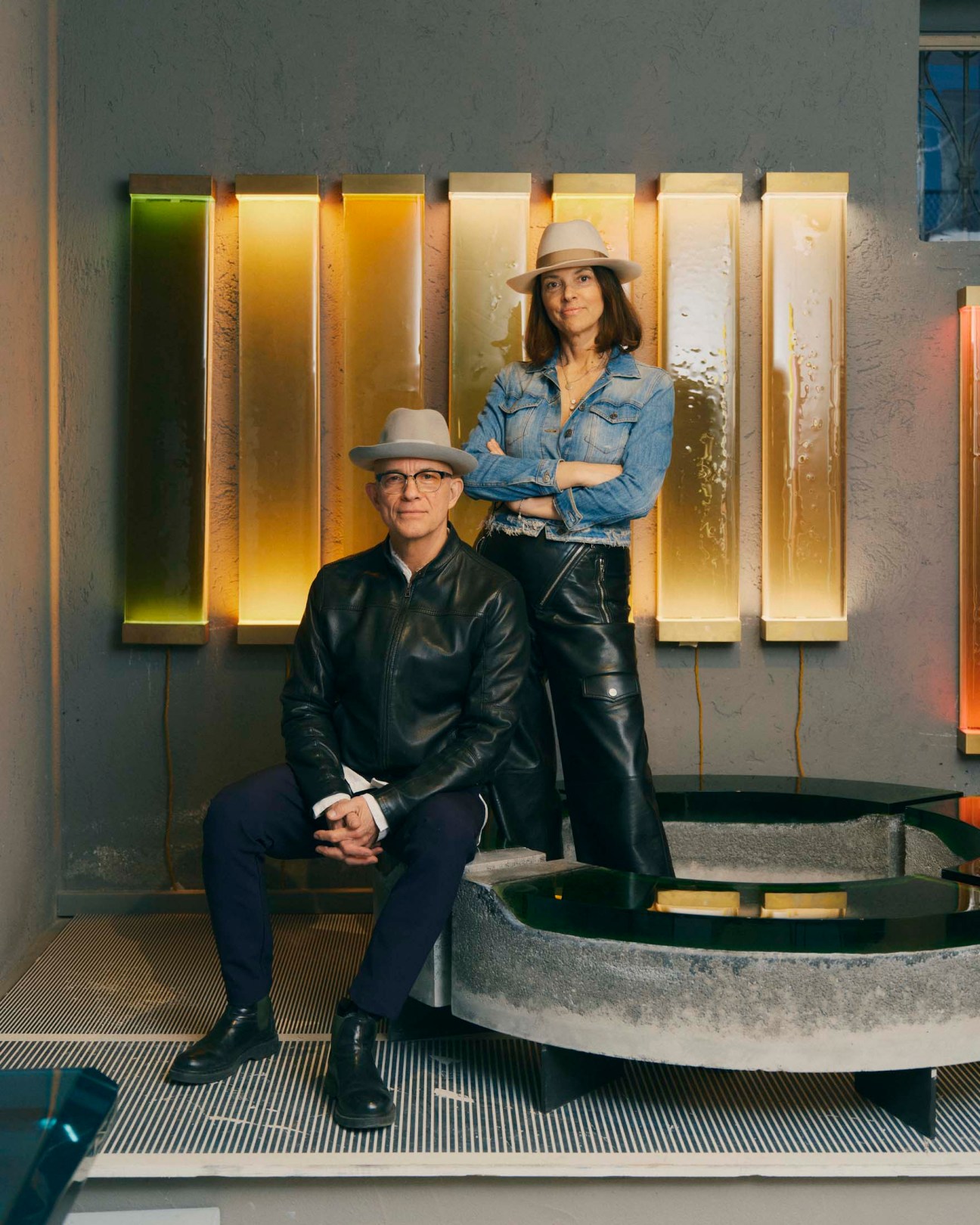
Tell us how art and design intersect in your work.
Aurel Basedow: We are both artists – that’s our starting point. So everything that we do is through the eyes of an artist. When we first exhibited our Transparency Matters collection, showcasing art alongside our design pieces, it was considered unconventional. But I believe that we were pioneers in this. Now, more galleries and fairs are embracing this crossover.
Draga Obradovic: I initially studied painting but then I worked in textiles and fashion for 15 years. Now I have the freedom to explore the entire creative process, from shaping an idea to its final application. It allows me to fully engage with my skills and passions.
AB: It’s similar for me too. For example, five years ago, my paintings were mostly monochrome. But as we explored transparency in our design work, my paintings became more colourful. The evolution happened intuitively, influenced by the materials that we were working with.
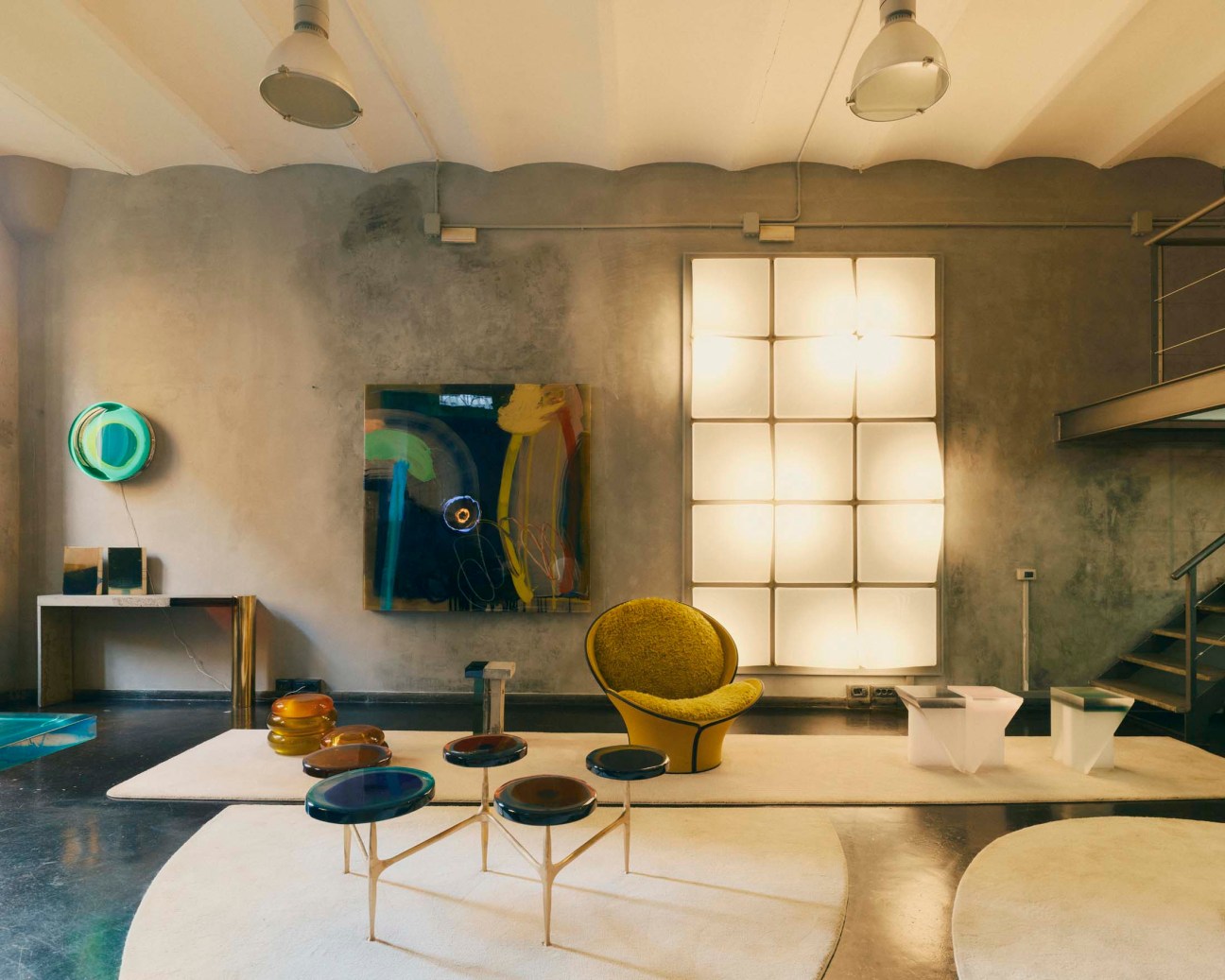
Why is resin one of your favoured materials?
DO: At the beginning it was just the best material for giving a new life to the damaged surfaces of heritage furniture we were upcycling. Resin is flexible; it works with imperfections, allowing the scars of the past to become a pattern or expression.

What’s the appeal of transparency?
AB: Resin has metaphorical, symbolic and mystical significance. It adds depth and volume. When people see my work in person, they’re often surprised: “Oh wow, I saw it online but this is completely different.” I tell them, “Yes, because you don’t see the third dimension in a photo.”
draga-aurel.com
Artist Patrick van Riemsdijk on the daybed that turns people using it into art
Creatives often talk about the blurring of boundaries between art and design. Patrick van Riemsdijk eloquently articulates the link between the two by referencing his partnership with Maxalto. “A daybed is an item of furniture that can be a piece of living art,” says the Dutch artist of the custom Lilum Dormeuse chaise longue that he has worked on with the Italian brand. “By sitting on it, you become part of the artwork.” The Mallorca-based painter was tapped by Maxalto to create a design for a limited run of 50 daybeds. It’s a collaboration that marks the Italian brand’s 50th anniversary – and its 30th under the artistic direction of Antonio Citterio. “We didn’t want to do a new product but a special version of an existing one,” says Citterio. “The concept was specific: we weren’t designing fabric first and upholstering it later. Instead the artist had to paint directly onto a beige daybed.”
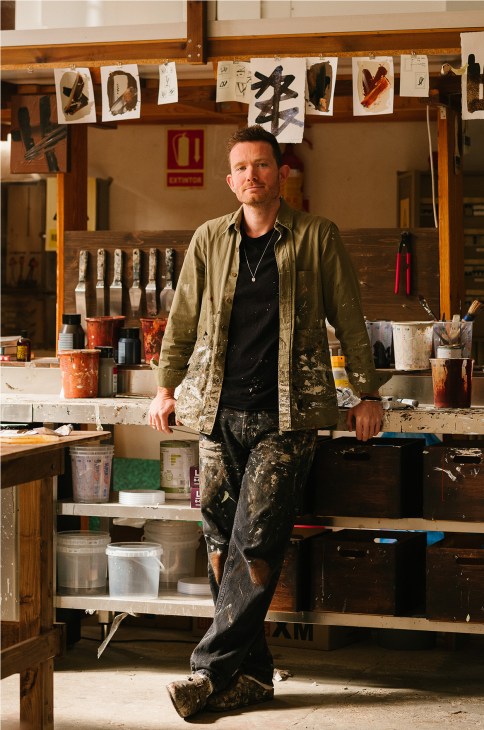
And so, Van Riemsdijk did; first he draped pieces of fabric over a Lilum Dormeuse to hone his approach before finally painting broad strokes across a couch. Colour development was key. “At first I considered black but it felt too harsh,” says Van Riemsdijk. “Maxalto has a lot of earthy tones, so I shifted to a dark brown that contrasts well with the beige fabric.” The final painted daybed was then transported back to Italy, where it was used to develop a fabric that replicated the colour and stroke-weight of this base model, which has been applied to the pieces.

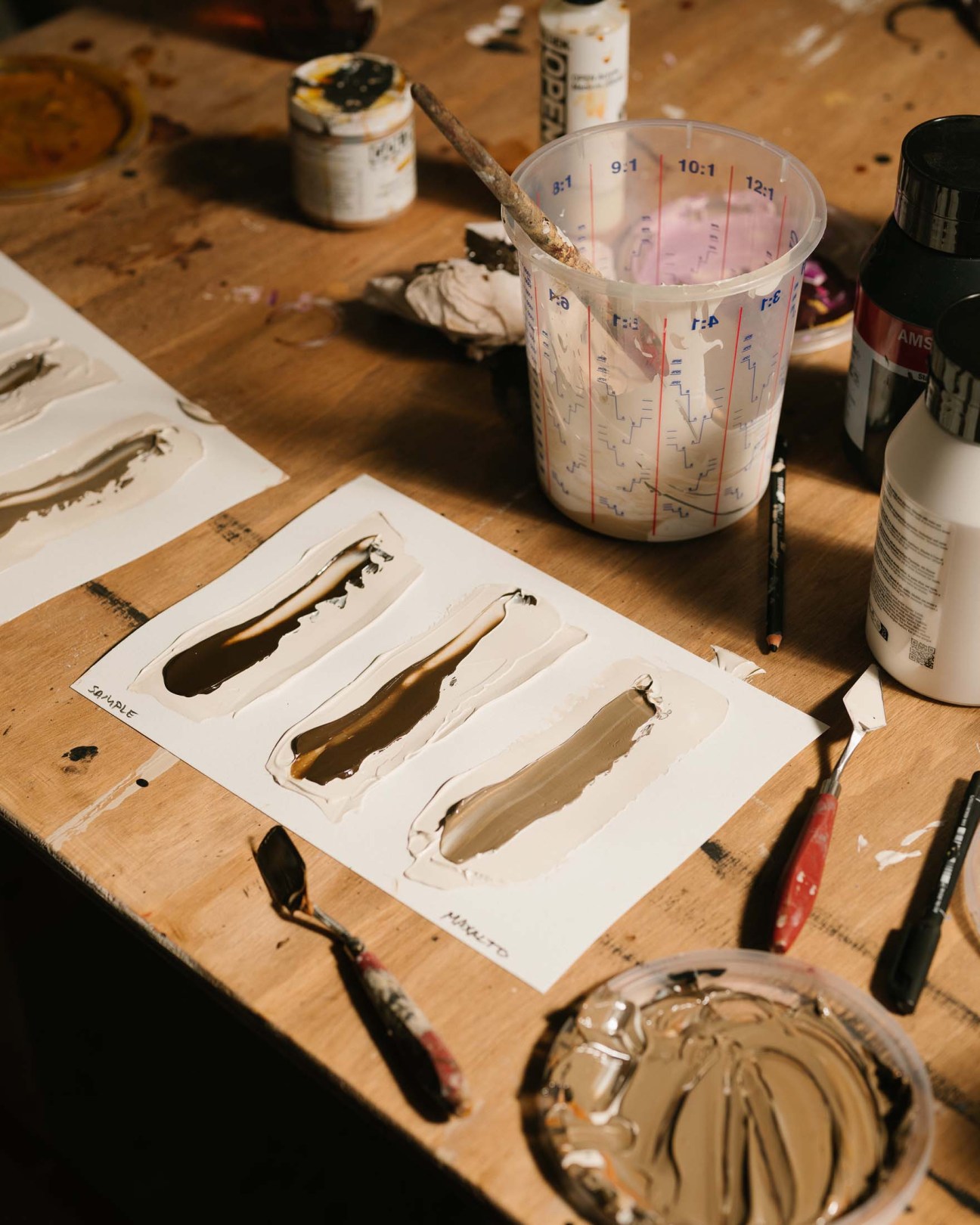
The result are daybeds that invite their user to engage with Van Riemsdijk’s reflection on the intersection of art and design: if one follows the brush strokes of the artist’s brush, they would find themselves in either a well-supported upright position or a leisurely laying-down pose – appropriate postures for becoming, in Van Riemsdijk’s words, a part of the art.
maxalto.com
patrickvanriemsdijk.com
Interview: US playwright Robert Wilson
US playwright and stage director Robert Wilson’s CV also includes sound design, choreography and visual art. So it shouldn’t come as a surprise to find Wilson in a mutual embrace with the design world. At Salone del Mobile he will present a light installation, “Mother”. The 30-minute sequence of music, light and imagery will cycle continuously in the same space as Michelangelo’s “Pietà Rondanini”, an unfinished sculpture the artist worked on from 1552 until his death in February 1564.
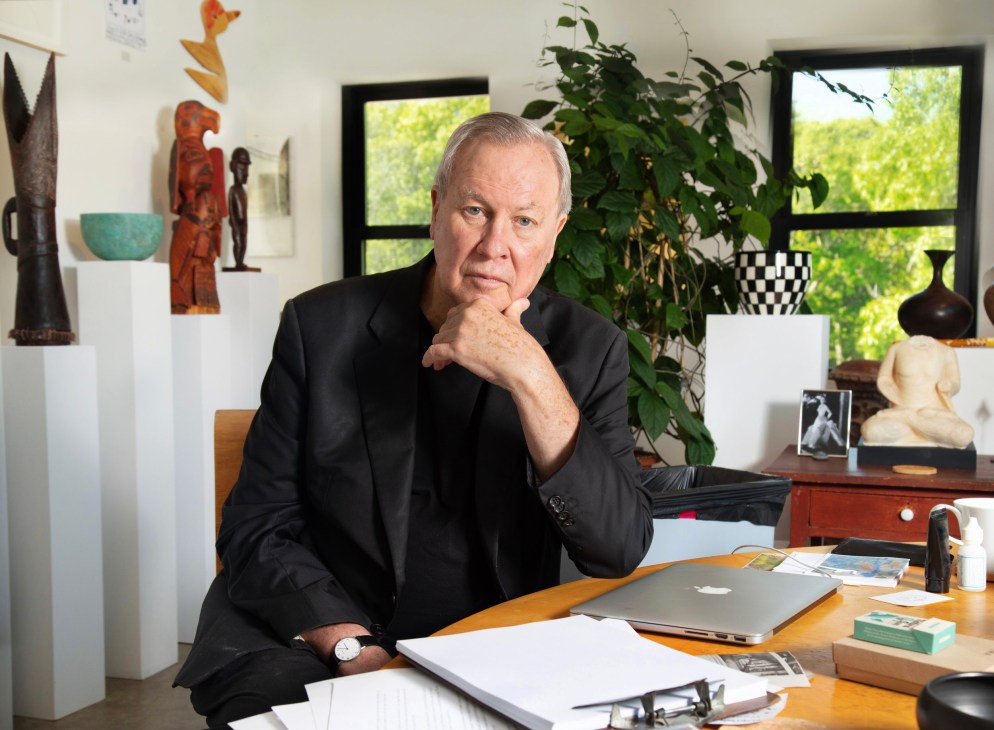
‘Mother’ exists in dialogue with an unfinished sculpture by one of the most highly regarded artists ever. What challenges does that context present?
You have to respect the master – especially someone like Michelangelo. I also have to respect Arvo Pärt, the composer whose music is part of the piece. At the same time, you have to be careful not to become a slave to the work. You have to find a balance that enables you to do something as yourself.
What can visitors to ‘Mother’ expect to encounter when they arrive?
The works by Pärt and Michelangelo aren’t timeless; they’re full of time. In response, I’m trying to create a space that’s full of time.
What role does The Watermill Center play in your work?
It’s a laboratory for creative thinking that’s open to everyone. The Center testifies to the fact that one of the few things that remains throughout time is art. If you look back 5,000 years, what do you see? You see artefacts – of the Mayans, the Egyptians and the Romans. Five thousand years from now, if anything from our time remains, it will be artefacts. The most pressing current affairs right now will be small footnotes in history. But art and culture are things that last.
In your mind, is there a meaningful distinction between art and design?
I see no difference between art and design. A line is a line. Space is space. If you’re Matisse, you’re drawing a line; if you’re Michelangelo, you’re drawing a line; if you’re designing a dress, you’re drawing a line. And there are only two kinds of lines in the entire universe: straight and curved. You have to decide how you want to arrange them.
What we can learn from Danish fair 3 Days of Design
The stakes are high for 3 Days of Design. If you were among the 45,000 attendees at the 2024 edition of Copenhagen’s annual design fair, you likely sensed the optimism in the air. With the event’s rapid growth – exhibitor numbers nearly doubled in a year – and its rising global recognition, one of the most debated questions last June was whether Copenhagen is on its way to becoming, in design-fair terms, the new Milan.
That might not sound too bad. Like Salone del Mobile, 3 Days of Design takes place in a country with a strong design heritage. While Milan attracts almost 10 times as many visitors and remains the industry’s global hub, Copenhagen is taking on a more central role in the international design conversation and this can only be beneficial. After all, it’s a position that suits the city well. For many brands, 3 Days of Design already serves that purpose. Fredericia’s CEO, Rasmus Graversen, for instance, values how the fair’s growing importance brings some of the most influential decision-makers in design to Copenhagen. It’s not just an advantage for his brand but for the Danish design industry as a whole, he tells me.

But what would it mean for Copenhagen to match Salone? Is it just about scale? And what about the character of Copenhagen – would it continue to shine through if too many people were to descend on the city at once? Like any creative endeavour, the best results come from staying true to your identity; that’s what 3 Days of Design should continue to lean into.
Perhaps the answer lies in celebrating the strength of the community that keeps the city creative all year round. Having lived in Copenhagen for nearly a decade, one of the things that I love most about it is how its rich design history and creative spirit aren’t confined to a three-day event – or restricted to industry insiders. Here, design is woven into the fabric of society and daily life.
You can thank history for that. The postwar creation of the Danish welfare state championed design as a public good, commissioning masters such as Arne Jacobsen to create beautiful, functional pieces that demonstrated the value of public investment in design. Today, the government continues to recognise the importance of young entrepreneurs and creativity, offering generous grants that fuel an economy largely driven by smaller businesses.
Visitors pick up on this, too. Beyond the ease of navigating compact Copenhagen and the laid-back atmosphere of 3 Days of Design, where even the smallest studio setting up a low-key showcase can turn into a full-on street party, the strength of the city-wide design fair lies in its authenticity – its ability to feel like a natural extension of what is already happening there. So in many ways, Milan could learn from Copenhagen – not the other way around.



